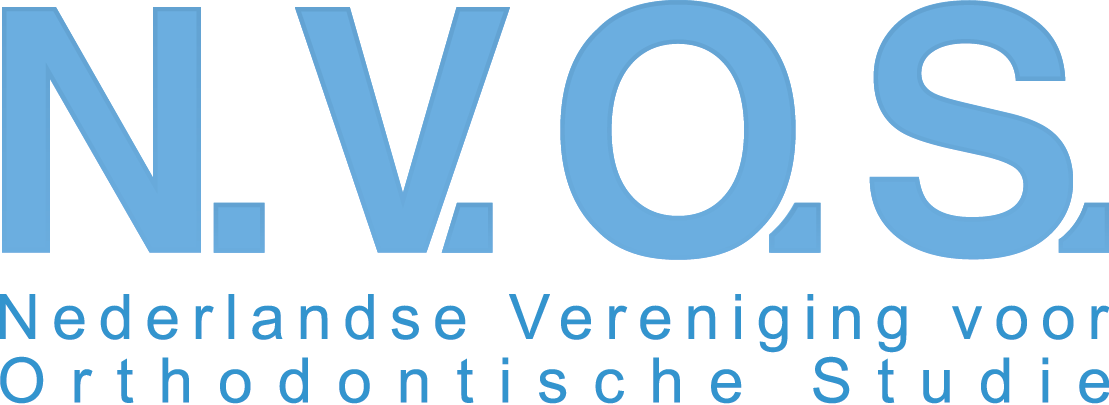
Sprekers
MODERATORS
 Gedurende de dag inclusief het hoofdprogramma zal Nicoline van der Kaaij optreden als moderator.
Gedurende de dag inclusief het hoofdprogramma zal Nicoline van der Kaaij optreden als moderator.
Dr. Nicoline van der Kaaij studeerde tandheelkunde en deed haar specialisatie tot orthodontist op ACTA. Sinds haar specialisatie (2012) is ze werkzaam bij ACTA voor onderwijs en onderzoek. In 2019 promoveerde ze op onderzoek naar witte-vleklaesies die bij orthodontiebehandelingen kunnen ontstaan. Van 2014 tot mei 2020 werkte ze in het Erasmus MC-Sophia kinderziekenhuis te Rotterdam bij het schisisteam. In mei vorig jaar stapte ze over naar het schisisteam van het Amsterdam UMC. In 2016 werd ze mede-eigenaar van de orthodontiepraktijk ‘Orthodontisten Heemstede’. Daarnaast speelt ze op hoog niveau altviool.
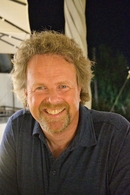 Tijdens het parallel middagprogramma neemt Marcel van der Zwet de rol van moderator op zich.
Tijdens het parallel middagprogramma neemt Marcel van der Zwet de rol van moderator op zich.
Marcel van der Zwet, tandarts, studeerde in 1988 af aan de UvA. In 1990 is hij een algemene tandheelkundepraktijk gestart in Bleiswijk. Van 1998 t/m 2014 gaf hij les aan tandheelkunde studenten en tandartsen aan ACTA bij de sectie parodontologie. Tot zijn werkzaamheden behoorde o.a. de parodontale diagnostiek en behandelplanning, parodontale chirurgie, implantologie en mondfotografie. Daarnaast is hij medeauteur van de boeken “Professionele gebitsreiniging” en “Ultrasoon, de stille kracht”. Marcel van der Zwet geeft geregeld cursussen aan tandartsen en mondhygiënisten.
SPREKERS
Perio-Ortho considerations after Dental Trauma: Can we minimize complications?
Dr. Nestor Tzimpoulas, Greece
 Traumatic dental injuries (TDI) present significant challenges in Dentistry. Prompt emergency management of traumatized teeth, periodontal tissues and bone is crucial for their long-term survival and for prevention of potential post-traumatic healing complications. Improper tooth repositioning, inadequate splinting, mishandling of soft-tissue injuries, and delayed complications like external root resorptions can jeopardize periodontal health, leading to attachment loss, gingival recessions, marginal bone loss and ankylosis. Additionally, they may cause periodontal esthetic issues and malocclusions, necessitating interdisciplinary treatment planning and collaboration between periodontists and orthodontists to address functional and esthetic concerns. What is the impact of TDI on periodontal tissues and healing mechanisms? Can we prevent post- traumatic periodontal complications? This presentation is focused on the critical role of dental professionals in minimizing complications and achieving predictable long-term treatment outcomes after various TDI.
Traumatic dental injuries (TDI) present significant challenges in Dentistry. Prompt emergency management of traumatized teeth, periodontal tissues and bone is crucial for their long-term survival and for prevention of potential post-traumatic healing complications. Improper tooth repositioning, inadequate splinting, mishandling of soft-tissue injuries, and delayed complications like external root resorptions can jeopardize periodontal health, leading to attachment loss, gingival recessions, marginal bone loss and ankylosis. Additionally, they may cause periodontal esthetic issues and malocclusions, necessitating interdisciplinary treatment planning and collaboration between periodontists and orthodontists to address functional and esthetic concerns. What is the impact of TDI on periodontal tissues and healing mechanisms? Can we prevent post- traumatic periodontal complications? This presentation is focused on the critical role of dental professionals in minimizing complications and achieving predictable long-term treatment outcomes after various TDI.
Orthodontic treatment of patients with severe periodontitis (stage III and IV)
Prof. dr. Conchita Martin, Spain
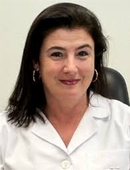 Pathological tooth migration often occurs as a consequence of severe periodontal damage in patients diagnosed with stage III and IV periodontitis, leading to both functional and aesthetic issues. Managing patients at these stages is intricate, necessitating collaboration between periodontal and orthodontic specialists. Treatment for such patients should encompass periodontal therapy to mitigate inflammation and achieve periodontal health, alongside subsequent ortho.
Pathological tooth migration often occurs as a consequence of severe periodontal damage in patients diagnosed with stage III and IV periodontitis, leading to both functional and aesthetic issues. Managing patients at these stages is intricate, necessitating collaboration between periodontal and orthodontic specialists. Treatment for such patients should encompass periodontal therapy to mitigate inflammation and achieve periodontal health, alongside subsequent ortho.
AI-assisted Personalised Periodontal Care for perio and ortho patients
Dr. Christoph Ramseier, Switzerland
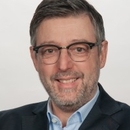 Advances in artificial intelligence (AI) are trans- forming periodontal therapy, enabling a personalized treatment paradigm for patients with orthodontic appliances such as brackets and aligners. This presentation will explore the integration of AI in the diagnosis, planning and management of periodontal care specifically tailored for periodontal and orthodontic patients. By using AI algorithms, oral health professionals can refine risk assessments, im- prove intervention strategies and provide personalized behavioral support. Highlighting recent innovations and practical applications, this discussion underscores the central role of AI in improving outcomes and rede- fining traditional methods of periodontal care.
Advances in artificial intelligence (AI) are trans- forming periodontal therapy, enabling a personalized treatment paradigm for patients with orthodontic appliances such as brackets and aligners. This presentation will explore the integration of AI in the diagnosis, planning and management of periodontal care specifically tailored for periodontal and orthodontic patients. By using AI algorithms, oral health professionals can refine risk assessments, im- prove intervention strategies and provide personalized behavioral support. Highlighting recent innovations and practical applications, this discussion underscores the central role of AI in improving outcomes and rede- fining traditional methods of periodontal care.
Gingival recession in orthodontic patients: long-term progression and interdisciplinary treatment approach
Prof. dr. Christos Katsaros, Switzerland
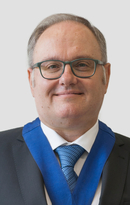 Orthodontic tooth movement can induce gingival recession. The available scientific evidence cannot give a definitive answer to whether orthodontic treatment is a major risk factor for gingival recession in the long-term. The same is true regarding the role of individual patient-related or treatment- related contributing factors. Active fixed retainers can also induce unwanted tooth movements, which mainly manifest as inclination and torque changes and are progressive. This presentation will discuss the role of active orthodontic treatment and fixed retention in the development of gingival recession. Moreover, it will illustrate clinical situations needing orthodontic preparation prior to surgical coverage of gingival recession.
Orthodontic tooth movement can induce gingival recession. The available scientific evidence cannot give a definitive answer to whether orthodontic treatment is a major risk factor for gingival recession in the long-term. The same is true regarding the role of individual patient-related or treatment- related contributing factors. Active fixed retainers can also induce unwanted tooth movements, which mainly manifest as inclination and torque changes and are progressive. This presentation will discuss the role of active orthodontic treatment and fixed retention in the development of gingival recession. Moreover, it will illustrate clinical situations needing orthodontic preparation prior to surgical coverage of gingival recession.
Gingivale recessies na orthodontie: verken de grenzen en mogelijkheden
Dr. Natasha Lioubavina-Hack, Nederland
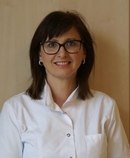 Het aantal patiënten dat gingivale recessies na orthodontie onprettig en lelijk vindt neemt in de loop van de tijd toe. Een dun tandvleesfenotype en een overmatige buccale of linguale tandpositie tijdens of na de ortho leiden tot bot dehischetie en gingivale recessies. De diepte van de recessies varieert van ondiep tot aan de apex. De parodontoloog staat vaak voor een dilemma: direct opereren of eerste terugverwijzen naar de orthodontist voor de correctie
Het aantal patiënten dat gingivale recessies na orthodontie onprettig en lelijk vindt neemt in de loop van de tijd toe. Een dun tandvleesfenotype en een overmatige buccale of linguale tandpositie tijdens of na de ortho leiden tot bot dehischetie en gingivale recessies. De diepte van de recessies varieert van ondiep tot aan de apex. De parodontoloog staat vaak voor een dilemma: direct opereren of eerste terugverwijzen naar de orthodontist voor de correctie
van de wortelpositie in het bot? De juiste diagnose, de keuze voor een de optimale chirurgische techniek en in sommige gevallen de multidisciplinaire behandeling resulteren in voorspelbare optimale langdurige klinische en esthetische resultaten.
Why we should not accelerate orthodontic tooth movement
Prof. dr. Yijin Ren, Nederland
 Various methods for accelerating orthodontic tooth movement, both surgical and non-surgical, have been reported in the past 20 years. However, none of these methods have successfully provided a moderate level of evidence to support their efficacy. Studies demonstrating temporary positive outcomes during specific phases of orthodontic intervention have failed to establish their clinical relevance across the entire treatment period or to evaluate the potential complications and risks for relapse. Is it scientifically
Various methods for accelerating orthodontic tooth movement, both surgical and non-surgical, have been reported in the past 20 years. However, none of these methods have successfully provided a moderate level of evidence to support their efficacy. Studies demonstrating temporary positive outcomes during specific phases of orthodontic intervention have failed to establish their clinical relevance across the entire treatment period or to evaluate the potential complications and risks for relapse. Is it scientifically
justifiable to pursue accelerated tooth movement from a biological perspective? Does increased speed of tooth displacement necessarily lead to improved treatment outcomes? What ethical considerations come into play? Alternatively, shouldn’t we direct our efforts towards areas that can genuinely enhance patient well-being and elevate the standards of our profession? I look forward to exchanging thoughts on these aspects with you and gaining inspiration from our collective insights.
Day to Day Digital Dentistry
Drs. Bas Leempoel, Nederland
 De toepassingen van digitale technieken in de tandheelkunde worden steeds groter. Maar de implicatie in de dagelijkse praktijk stuit soms nog op weerstand vanwege onzekerheid
De toepassingen van digitale technieken in de tandheelkunde worden steeds groter. Maar de implicatie in de dagelijkse praktijk stuit soms nog op weerstand vanwege onzekerheid
over de onbekende workflow. Aan de hand van een aantal casussen laat ik zien dat de stap naar een digitale praktijk niet zo groot hoeft te zijn. De rol van alle leden van het behandelteam zijn van essentieel belang in het succesvol implementeren van deze geweldige nieuwe technieken in de dagelijkse praktijk. Met 3D beelden, A.I. röntgen-analyse, intra- orale scanning en 3D-printing gaat er heel nieuwe wereld voor de patiënt en jou als behandelaar open.
Van Lingua tot Lach: Navigeren door Tongdisfunctie voor Mondgezondheid
Mayke Drost, Nederland
 Een lezing over de functie van de tong en de evaluatie van mondfrenulums. De tong is een orgaan met acht spierparen, speelt een essentiële rol in het verwerken van voedsel en helpt bovendien bij het handhaven van een gezonde mond; Bij kinderen en volwassenen met een kort frenulum zijn de bewegingen en de functies van de tong beperkt. De verschillende gezondheidsproblemen zoals mond ademen, scheve tanden, snurken en zelfs slaapapneu kunnen daardoor ontstaan. Wanneer is het behandelen van een tong- en/of lipbandje geïndiceerd? Tijdige diagnostiek en waar nodig interventies zijn essentieel voor juiste tong- functionaliteit en het herstellen van een optimale mondgezondheid.
Een lezing over de functie van de tong en de evaluatie van mondfrenulums. De tong is een orgaan met acht spierparen, speelt een essentiële rol in het verwerken van voedsel en helpt bovendien bij het handhaven van een gezonde mond; Bij kinderen en volwassenen met een kort frenulum zijn de bewegingen en de functies van de tong beperkt. De verschillende gezondheidsproblemen zoals mond ademen, scheve tanden, snurken en zelfs slaapapneu kunnen daardoor ontstaan. Wanneer is het behandelen van een tong- en/of lipbandje geïndiceerd? Tijdige diagnostiek en waar nodig interventies zijn essentieel voor juiste tong- functionaliteit en het herstellen van een optimale mondgezondheid.
Is werken met pijn en ongemak aan de stoel herkenbaar voor jou? Een goede houding is geen luxe!
Pascale Hemelrijk, Nederland
 Het is een verontrustende realiteit: bijna 70% van de mondhygiënisten meldt rug-, nek-, hand- en polspijn te ervaren. Nog zorgwekkender is het feit dat 60% van hen niet tot aan de pensioenleeftijd werkt. Het is hoog tijd om deze ontwikkeling om te buigen! Heb je er ooit bij stilgestaan dat een verkeerde stoelpositie rond de behandelstoel het eindresultaat van je behandeling negatief kan beïnvloeden? De manier waarop je gedurende de dag zit, bepaalt ook of je de werkdag fit of vermoeid afsluit. Dit essentiële aspect verdient meer aandacht. In deze lezing worden niet alleen de aspecten van ergonomie besproken, inclusief de gevolgen die kunnen ontstaan bij een verkeerde werkhouding, maar nog belangrijker is dat we je laten zien hoe je met kleine aanpassingen niet alleen de best mogelijke zorg aan je patiënten kunt bieden, maar ook zelf comfortabel en gezond kunt werken!
Het is een verontrustende realiteit: bijna 70% van de mondhygiënisten meldt rug-, nek-, hand- en polspijn te ervaren. Nog zorgwekkender is het feit dat 60% van hen niet tot aan de pensioenleeftijd werkt. Het is hoog tijd om deze ontwikkeling om te buigen! Heb je er ooit bij stilgestaan dat een verkeerde stoelpositie rond de behandelstoel het eindresultaat van je behandeling negatief kan beïnvloeden? De manier waarop je gedurende de dag zit, bepaalt ook of je de werkdag fit of vermoeid afsluit. Dit essentiële aspect verdient meer aandacht. In deze lezing worden niet alleen de aspecten van ergonomie besproken, inclusief de gevolgen die kunnen ontstaan bij een verkeerde werkhouding, maar nog belangrijker is dat we je laten zien hoe je met kleine aanpassingen niet alleen de best mogelijke zorg aan je patiënten kunt bieden, maar ook zelf comfortabel en gezond kunt werken!